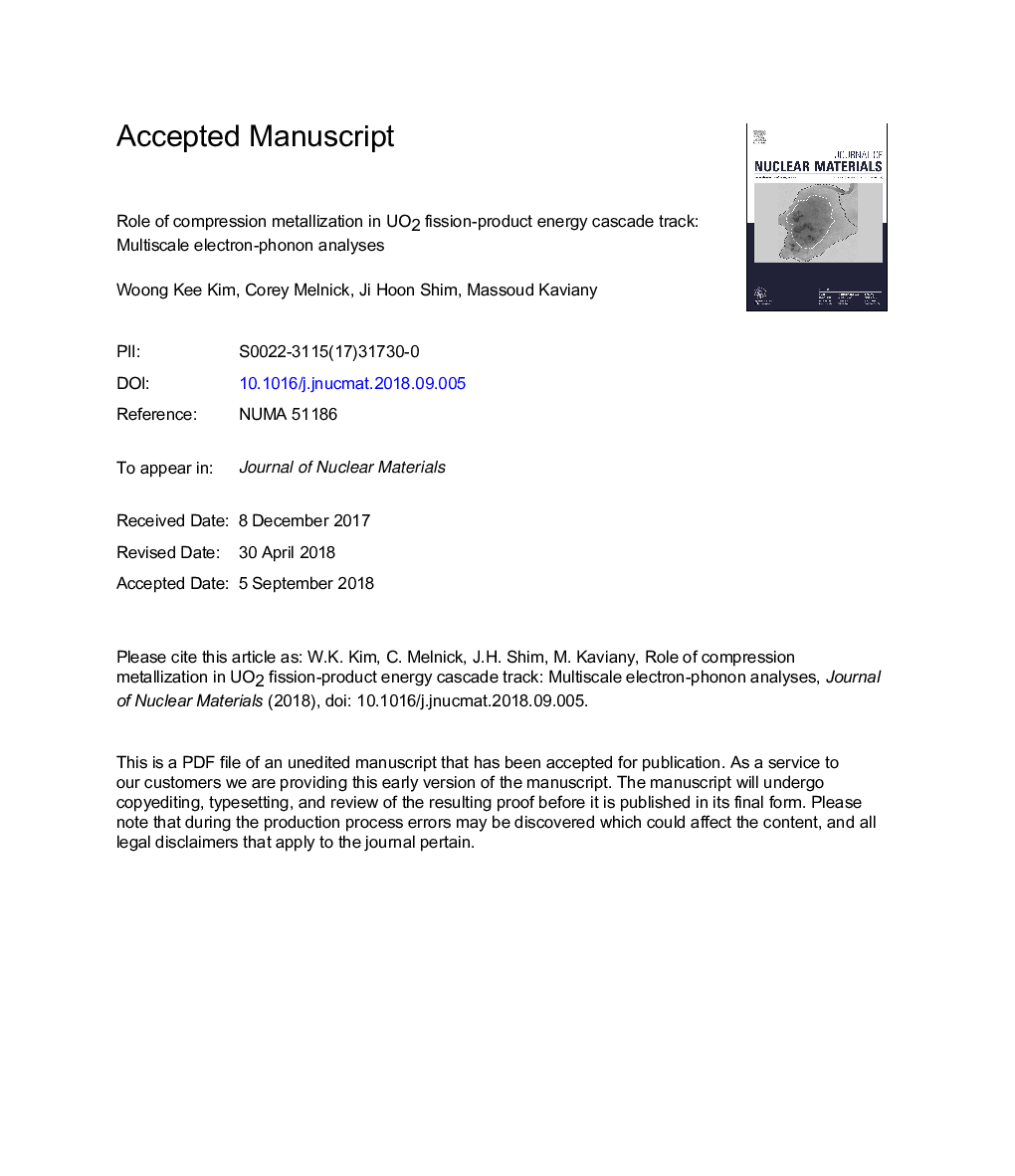| کد مقاله | کد نشریه | سال انتشار | مقاله انگلیسی | نسخه تمام متن |
|---|---|---|---|---|
| 10147645 | 1646493 | 2018 | 31 صفحه PDF | دانلود رایگان |
عنوان انگلیسی مقاله ISI
Role of compression metallization in UO2 fission-product energy cascade track: Multiscale electron-phonon analyses
دانلود مقاله + سفارش ترجمه
دانلود مقاله ISI انگلیسی
رایگان برای ایرانیان
کلمات کلیدی
موضوعات مرتبط
مهندسی و علوم پایه
مهندسی انرژی
انرژی هسته ای و مهندسی
پیش نمایش صفحه اول مقاله

چکیده انگلیسی
While the electronic stoppage of charged fission fragments is relatively well understood, the subsequent energy cascade is not. Recent efforts to investigate this cascade and predict the resulting damage have used a two-temperature model (TTM) of the electronic and phononic systems coupled with a classical molecular dynamics (MD) simulation of the crystal lattice. In order to accurately predict the track radius produced by a fission fragment in UO2, this model (TTMÂ +Â MD) requires that UO2, an insulator, have metallic properties, e.g., a substantial electron thermal conductivity and heat capacity. However, it has been predicted that UO2 becomes metallic under large pressures, and we perform ab initio (DFT-HSE) simulations to support this prediction. We show that the average U-U bond length decreases within and near the ion track during TTMÂ +Â MD simulations, supporting the use of volume contraction to model the pressurized UO2 cell. Additionally, we evaluate the electron, phonon, and electron-phonon coupling properties of UO2 for variations in the pressure. In particular, we calculate the electronic heat capacity and thermal conductivity, and the electron-phonon energy coupling for use in subsequent TTMÂ +Â MD simulations. The ab initio parameterized TTMÂ +Â MD simulations provide a set of the track radii predictions which bracket and include the experimentally observed radii. The accuracy of the ab initio parameterized TTMÂ +Â MD simulations depends on the pressure and degree of electron-phonon non-equilibrium assumed during the ab initio calculations. We suggest improvements to the current TTMÂ +Â MD methodology in light of these results. Still, we show that the pressure-induced transition of UO2 from insulator to metal and subsequent energy transfer from the electronic to phononic systems can accurately explain radiation damage during swift, heavy ion stoppage in UO2. We make some additional observations regarding the accumulation and recombination of damage along the ion track and make comparison to the common SRIM model of ion stoppage and damage accumulation.
ناشر
Database: Elsevier - ScienceDirect (ساینس دایرکت)
Journal: Journal of Nuclear Materials - Volume 511, 1 December 2018, Pages 148-163
Journal: Journal of Nuclear Materials - Volume 511, 1 December 2018, Pages 148-163
نویسندگان
Woong Kee Kim, Corey Melnick, Ji Hoon Shim, Massoud Kaviany,